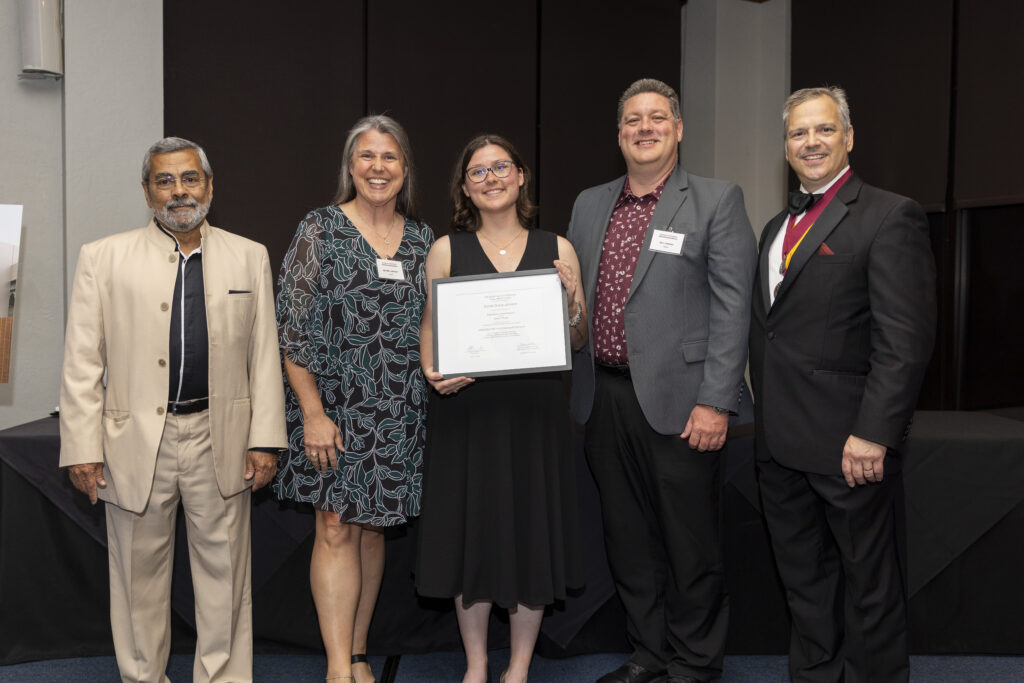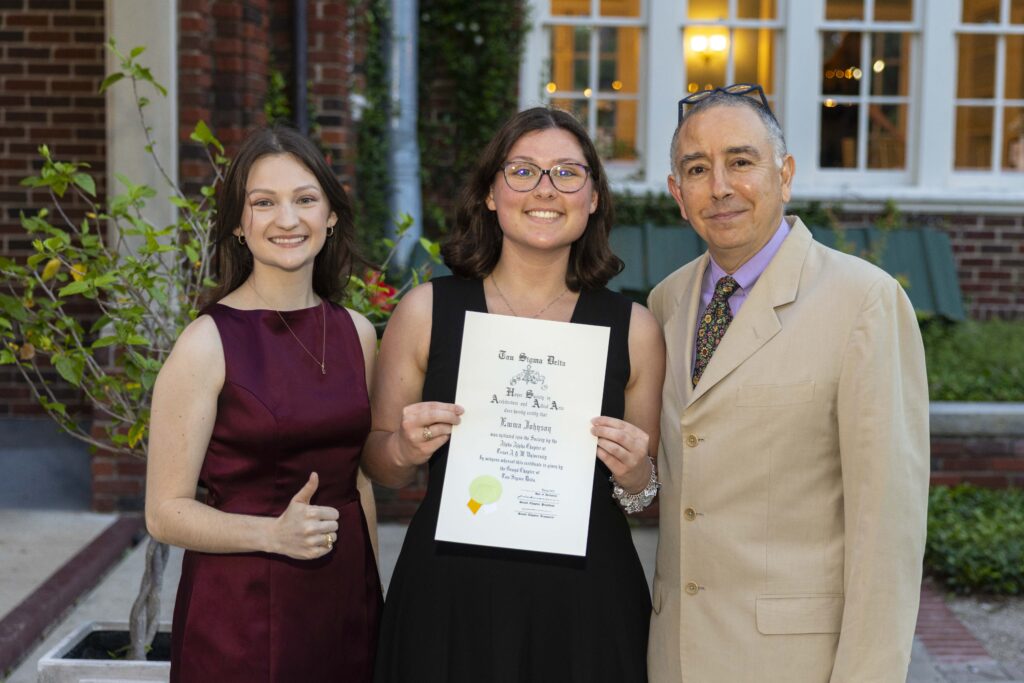Texas A&M Graduate Becomes First in Texas to Complete NCARB’s Integrated Path to Architectural Licensure Program
Texas A&M University former student Emma Johnson has made history as the first person in Texas to complete the Integrated Path to Architectural Licensure (IPAL) program.
IPAL is an accelerated licensure track developed by the National Council of Architectural Registration Boards (NCARB). Becoming a licensed architect traditionally takes over 13 years on average, according to NCARB. Candidates must earn a professional degree, complete a specified number of experience hours, and pass further examinations.
Students enrolled in an IPAL program have a unique opportunity to earn their licensure in six years, which is about 45 percent faster than the traditional path, at one of 33 NAAB-accredited architecture programs nationwide.
NCARB launched the IPAL program in 2015 to give dedicated students a faster path to licensure. Texas A&M began offering the program in 2021 and remains the only institution in Texas to actively provide the IPAL program.
A Blueprint for Success
Johnson officially earned her architectural license on May 22, becoming the first person to concurrently complete the IPAL program requirements while earning a degree in Texas.
She began the IPAL program in August 2019, adding that her Aggie family legacy influenced her journey to Texas A&M. Her father, Eric Johnson ’95, earned a degree in Construction Science, while her mother, Dr. Jennifer Johnson ’96, ’97, ’00, holds three degrees from the university, including a Doctor of Veterinary Medicine.
By the time of graduation, Johnson earned her Master’s of Architecture degree, completed over 3,740 Architectural Experience Hours (AXP) and passed all six parts of the Architect Registration Examination (ARE).
“The biggest challenge I faced was learning how to effectively manage my time while balancing education, professional experience and exam preparation,” Johnson said. “To navigate this, I focused on only two areas at a time.”
As she worked year-round as an architectural intern at the College Station office of the firm BRW Architects, Johnson said she rotated her other focus depending on the season. Johnson focused on coursework throughout the academic year, and when on break, she dedicated herself to studying and completing the ARE exams.
“Since I was already fulfilling the education requirement and gaining practical experience through my part-time internship at BRW Architects, I saw no reason not to start tackling the exams,” Johnson said.
In August 2024, Johnson passed her sixth and final exam, which meant she only had to wait until graduation to apply for her license.

Johnson said that participating in the IPAL program at Texas A&M has given her a significant professional career advantage.
Participating in the IPAL program at Texas A&M has significantly accelerated her advancement within a firm, and eliminated the stress of completing licensure exams while balancing a professional career, setting her apart from her peers and positioning her for leadership opportunities and greater professional growth from the start.
Johnson credits her professors and mentors for the support she had throughout her time at Texas A&M.
“I hope to pay that forward by supporting and inspiring the next generation of architects,” she said. “Sharing knowledge, offering guidance and fostering growth in young professionals is just as important to me as the buildings I help create.”
Since graduating, Johnson will transition into a full-time role at BRW Architects, where she has interned for the past four years. There, she hopes to mentor future interns who were once in her position, while continuing her work designing civic architecture for communities.
Later this year, the Texas Society of Architects will celebrate her achievement at the TxA Annual Conference and Design Expo in Dallas.
Bridging the Gap: IPAL at Texas A&M
Texas A&M IPAL and AXP advisor Dr. Valerian Miranda helped oversee Johnson’s growth and progress through the program. Miranda said Johnson’s success in the program shows that Aggie architects are at the forefront of professional accomplishment in the state.
“Emma has set a new milestone by reducing the time from entering college to architectural licensure, from an average of 13 years to six years,” Miranda said. “The IPAL program is well established with several students set to follow her example in the coming years.”
Effective July 1, NCARB will implement new changes to the program requirements, which enable IPAL students to complete only 75% of their AXP experience hours and take NCARB’s six free practice exams before graduation.
According to the Department Head of Architecture, Dr. Gregory Luhan, these changes do not fundamentally change the nature of Texas A&M’s IPAL program, but expand opportunities for students to connect to the profession in different ways without the pressure of meeting experience milestones and passing all examinations before graduation.

“Emma is a role model for achieving education, experience and examination simultaneously in six of her exams, eight months before graduation,” Luhan said. “The IPAL changes will give our students even more opportunities to effectively bridge our academic program to the profession while broadening student experiences and professional success.”
Miranda said the Department of Architecture has been a leader in preparing students for careers in architecture by providing them with meaningful experiences and opportunities that support their professional goals.
“What truly sets the program apart is its emphasis on real-world experience,” Johnson said. “The opportunity to intern as early as my third year of undergraduate studies was pivotal in bridging the gap between academia and practice.”
Miranda said that offering the IPAL program at Texas A&M is the latest in a series of curricular innovations introduced by the Department of Architecture to benefit students.
“By integrating education, experience and licensure preparation, the IPAL program accelerated my growth and positioned me for success in ways that a traditional path simply couldn’t,” Johnson said.
To learn more about the IPAL program at Texas A&M, visit arch.tamu.edu/arch/ipal/.


